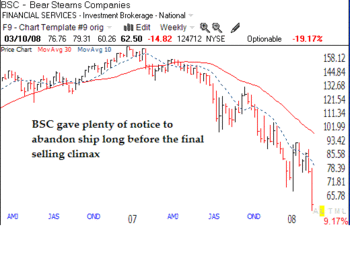All my market indicators are back to zero. There were 6 new highs and 109 new lows in my universe of 4,000 stocks on Tuesday. The market indexes I follow (SPY, DIA, QQQQ) remain in down-trends. Tuesday was the 36th day of the current QQQQ down-trend. The short term down-trend in the QQQQ that ended on March 24, lasted 55 days, and the one that ended on August 5, lasted 39 days. So, we may have a ways to go before we get a reversal of the current short term down-trend. Such a reversal would occur within a longer term down-trend but could still be a trade-able rally. For now, I remain in cash and a little short and keep a watch list of promising stocks to buy when the market turns. My latest candidate is LPHI, which hit a new high on Tuesday and is within 5% of its all-time high. This is a promising monthly chart of LPHI. I might be tempted to buy
LPHI if it closes above its peak price of 42.32. LPHI has appeared on the IBD100 list
and has solid earnings and a PE below its earnings growth rate. I will
watch LPHI along with EBS, which I mentioned a few days ago. Stocks
that can survive this market near their all-time highs are potential rockets
in any rallying market. If we want to catch a rocket to the moon we must jump on one pointing towards the moon and that is rising to new heights. I don't want to buy stocks at bargain low prices. Think how many times past stock market stars hit new highs over and over again as they climbed to the heavens. I love bear markets because there are so few stocks hitting new highs that it is far easier to spot the new leaders….
Thank you for those of you who inquired about my college course on technical analysis. Unfortunately, the course is limited to just 20 honors students each year for one semester. You can still get an idea of the course by reading the books in "my best trading books" section to the far lower right of this blog. These are the books that made a difference to my trading success over the past 40 years and my students read all of them during the first four weeks of the semester. They then design their individual trading strategy and begin a 10 week trading simulation with a virtual margin account worth $100,000. They also learn how to use TC2007, a terrific technical analysis tool, to scan the market for potential stocks to buy or short. I use TC2007 to compute all of the statistics I display in this blog.
